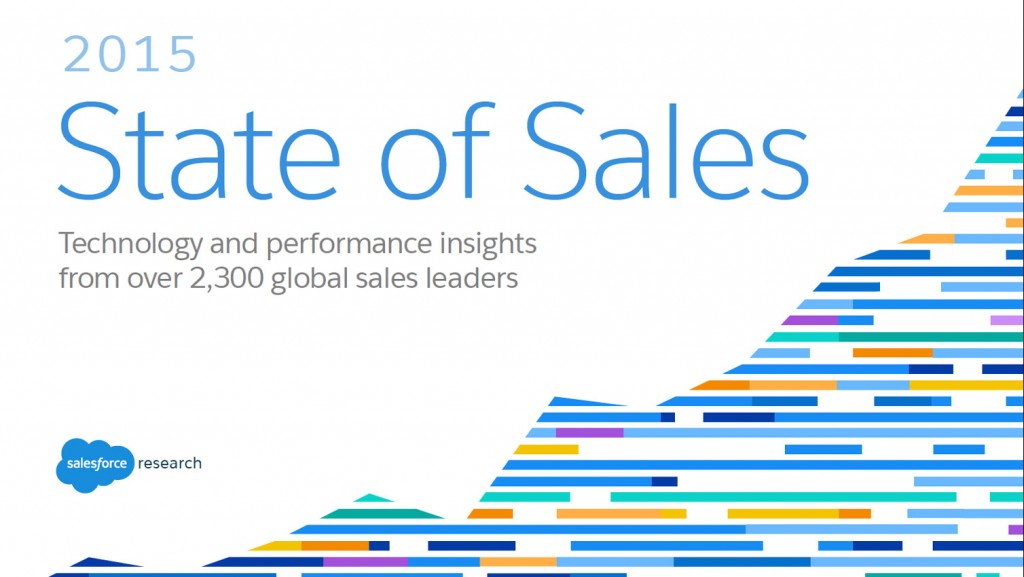Salesforce Customers Reveal 3 Huge Sales Challenges
Salesforce recently polled over 2,300 global sales leaders. The result: one of the deepest dives I’ve seen yet into the factors that are making and breaking today’s inside sales teams. One of the most interesting things in Salesforce’s State of Sales 2015 report are the major challenges according to Salesforce customers. This is a subject that I’ve been especially interested in lately, having recently worked on our own report about sales challenges.
 According to the Salesforce report, the top challenges include:
According to the Salesforce report, the top challenges include:
- Increased market competition
- Customers looking for the lowest price possible
- Customers’ needs growing more sophisticated
Since all of Revenue.io’s customers are also Salesforce customers, I thought I’d directly speak to these three huge challenges sales leaders are facing. I’ll also offer some actionable tips that sales leaders can use to overcome these challenges.
#1 – Increased Market Competition
58% of those surveyed see increasing market competition as a huge challenge—higher than any other factor. This is partially due to the fact that tech is becoming increasingly commodified. Shortly after releasing a solution, you can (and should) expect competitors to copy it. Sometimes they may be offering a less sophisticated version and other times they might expand on your feature set. Either way, there’s virtually nothing you can do to stop competition. So instead, you have to find ways to leave competitors in the dust.
Actionable Tips
So what are the best ways to steamroll competitors? First of all, you need to track deals with competitors in Salesforce. Try to keep your percentage of competitive deals as low as possible. It’s a lot easier to win deals before competitors are involved. In fact, according to research from Forrester, you’ll win the deal 74% of the time if you can get in before the competition and help create the solution vision with your buyer. This likely entails putting more resources into outbound prospecting, since inbound leads are more likely to be researching competitors.
Looking for someways to improve prospecting? Be sure to watch our on-demand webinar The B2B Prospecting Code: Secrets for Aggressive Pipeline Growth.
#2 – Customers Looking for the Lowest Price Possible
Virtually anyone who has ever worked in sales is familiar with customers looking for the lowest price. This is true whether you’re selling vacuum cleaners or complex SaaS products. Let’s face it, in many B2C industries pricing is everything. But if you’re working for a B2B company and too many deals are being won or lost solely based on pricing you may be doing something wrong. Customers are usually happy to pay more to vendors that can establish credibility and offer unique selling points. But if you fail to establish credibility and differentiate yourself from the competition, you’ll almost surely find yourself in a price-slashing war.
Actionable Tips
Here are a few ways to quickly establish credibility:
- Understand your prospects’ industry – taking the time to understand industry-specific pain points can go a long way in convincing them that you are the vendor to buy from.
- Use referrals – Using case studies, testimonials and referrals can do wonders when it comes to differentiating yourself from competitors
- Provide thought leadership – Point your prospects to some relevant thought leadership by either you (did you author a post for your company’s blog?) or someone else at your company. As an example, if your CEO had an article published on a reputable site like Forbes or Entrepreneur it can quickly enhance your brand’s credibility.
#3 – Customers’ Needs Have Grown More Sophisticated
47% of those surveyed feel challenged by the fact that customers’ needs have grown more sophisticated. I’ve certainly found this to be true. Customers are getting smarter and smarter. In tech you should expect prospects that are actively researching the landscape. It’s also common for prospective customers to ask for solutions to be tailer-fit to their individual needs (i.e. will the marketing automation system you’re providing sync with the CRM they already have in place?).
Actionable Tips
You and your customers share a common goal. You both want the solution you’re offering to add maximum value. But since customers’ needs are sometimes disparate and complex, it often makes sense to start with a small deal or pilot program. This can be a testing ground during which you can either prove your solution’s value or, discover quickly that your solution isn’t right for a particular customer. While it may sound counterintuitive to start deals small instead of pushing for those big deals, it can really pay off. Starting small allows you to scale deals over a slower period of time, which helps reduce the risk of deals. And reducing risk is a great way to beat competitors.
Want a look at some other factors that are keeping sales leaders up at night? Look no further than our recent eBook.
